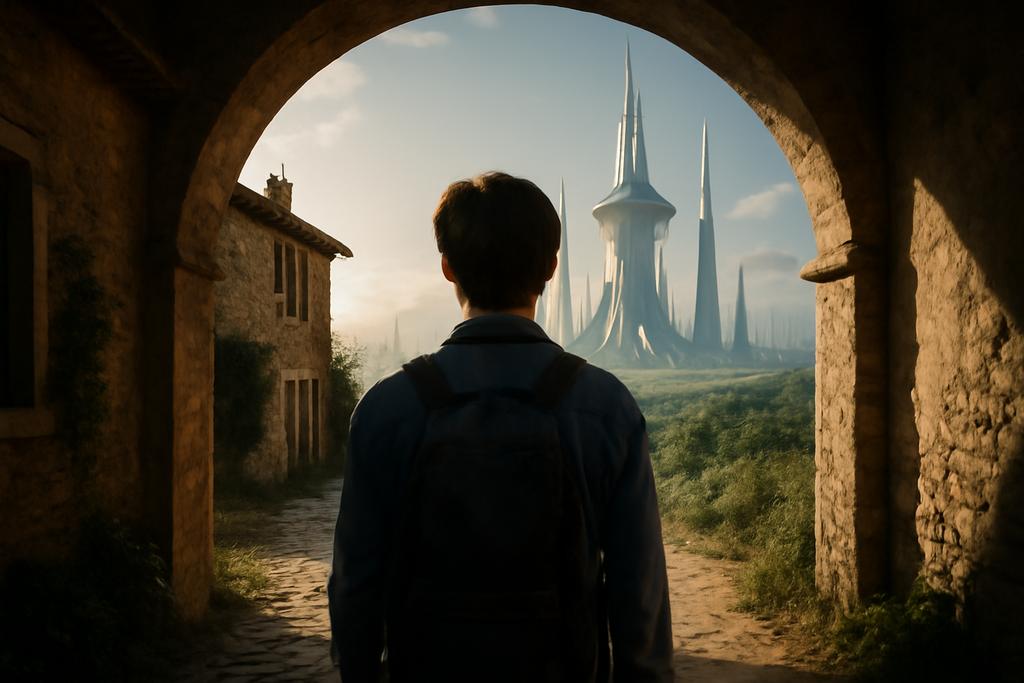Step into a photo and explore a world that stretches on forever. This isn’t science fiction; it’s the reality offered by Yume, a groundbreaking new AI model developed by researchers at the Shanghai AI Laboratory and Fudan University. Led by Kaipeng Zhang, this system allows users to navigate a dynamic, realistic virtual environment generated from a single image input – an interactive experience unlike anything we’ve seen before.
Beyond Static Images: Entering Interactive Worlds
Imagine a world where a simple photograph transforms into a fully explorable, ever-changing landscape. That’s the promise of Yume, which uses an input image (or even a video) to craft an immersive virtual reality you can navigate using just a keyboard. Press ‘W’ to move forward, ‘A’ and ‘D’ to strafe left and right, and the arrow keys to control the camera’s angle. The AI dynamically generates the world around you, simulating realistic movement and responses to your actions. It’s like stepping through a portal into a personalized, infinite world born from a single still image.
The key to Yume’s magic lies in its sophisticated design. Unlike static image generation, creating interactive video requires a system capable of maintaining consistency and coherence over time, a challenge that previous AI models haven’t fully cracked. Yume’s researchers developed a multi-faceted approach to overcome these hurdles, improving visual quality and making control far more intuitive than ever before.
The Architecture of Immersion: Building a Dynamic World
Yume’s architecture is a marvel of engineering, combining several cutting-edge techniques. At its core, it’s based on a diffusion model, a type of AI that generates images by gradually removing noise from a random pattern. But Yume isn’t just any diffusion model; it’s designed for video, incorporating a “Masked Video Diffusion Transformer” which is exceptionally effective in reducing visual artifacts. These are the glitches, the unrealistic blurriness and distortion that often plague AI-generated content.
But simply generating images isn’t enough for an interactive experience. Yume needs to “remember” where the user has been, ensuring that the world doesn’t randomly reset itself. This is achieved through a clever “memory module” in the architecture. The model remembers and reuses information from previously generated frames, seamlessly integrating them into the current view. Think of it like a constantly updating map, keeping the world consistent and preventing jarring discontinuities.
To make navigation feel natural, Yume uses a “Quantized Camera Motion” system. Instead of relying on precise, complex camera movements that would be difficult for a user to control, the system simplifies these actions into discrete commands like “move forward,” “turn left,” and so on. This makes navigating the virtual world intuitive and straightforward, like playing a video game.
Beyond the Keyboard: The Future of Interaction
While the current iteration utilizes keyboard controls, the researchers envision a future where Yume can be controlled through more advanced methods, such as brain-computer interfaces or other peripheral devices. This capability could offer revolutionary applications in areas like virtual reality therapy, simulation training, and artistic expression. Imagine a surgeon practicing complex procedures in a hyper-realistic virtual environment controlled by their own thoughts.
The potential applications of Yume extend beyond gaming and entertainment. Architects could explore virtual models of their designs, allowing for immediate feedback and iterative improvements. Urban planners could test different city layouts, visualizing the impact of various design choices in a dynamic, interactive format. It’s a technology with the potential to reshape how we design, interact, and experience our world – virtual or otherwise.
Limitations and Future Directions
Despite the impressive capabilities, Yume is still under development. The researchers acknowledge current limitations, focusing particularly on enhancing visual quality, accelerating the generation process, and improving the precision of navigation. The project is updated monthly, a testament to the ongoing commitment to refinement and innovation.
This work represents a significant step forward in AI-driven world generation. The combination of photorealistic visuals, continuous interaction, and intuitive navigation opens up a range of exciting possibilities. As Yume evolves, it promises to transform the ways we interact with virtual worlds, blurring the lines between reality and imagination.










